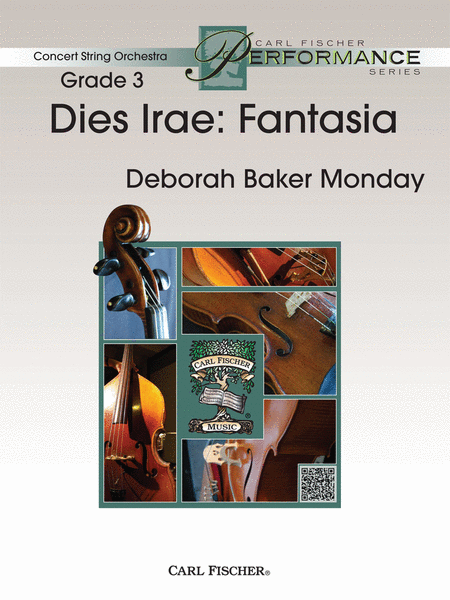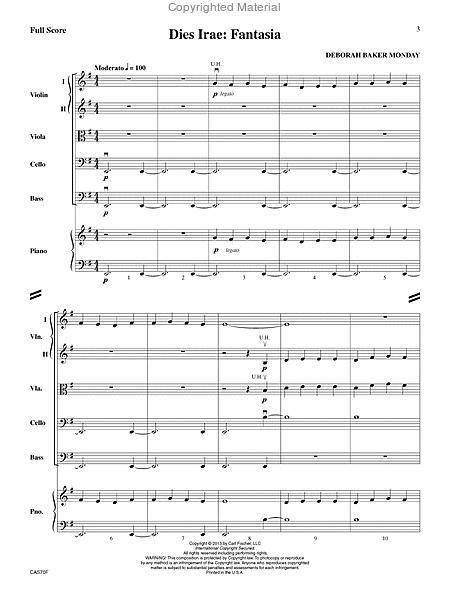Dies Irae: Fantasia
-
Ships in 1 to 2 weeks
Details
Description
SKU: CF.CAS70
Composed by Deborah Baker Monday. SWS FS. Carl Fischer Concert String Orchestra Series. Set of Score and Parts. With Standard notation. 8+8+2+5+5+3+5+12 pages. Duration 3 minutes, 36 seconds. Carl Fischer Music #CAS70. Published by Carl Fischer Music (CF.CAS70).ISBN 9780825891502. UPC: 798408091507. 9 x 12 inches. Key: E minor.
The Dies Irae is a hymn from the 13th century based on a poem describing the day of judgment, with the Latin words translating to mean “day of wrath.” Deborah Baker Monday has taken the Dies Irae and interspersed some of her favorite settings of the theme throughout her freely composed Fantasia. Students will enjoy exploring the many techniques used in composing this fantasy, and there is also the opportunity to have students engage in critical listening activities to recognize the Dies Irae in many musical masterpieces.
Dies Irae is a hymn from the thirteenth century based on a poem which describes the day of judgement where some will be saved and others will not. The Latin words “dies irae” literally mean “day of wrath.”The Dies Irae hymn became one of the sequences used in the Catholic liturgy. These sequences were based on various texts which were added to the jubilatio (melismas over the final syllable of the Alleluias) relating to the liturgy of the day. The Dies Irae was incorporated into the Requiem Mass (Mass for the Dead)Many composers have written a Requiem Mass (Mozart, Verdi, and Berlioz to name a few) and have included the Dies Irae. Other composers have chosen to use a more positive or uplifting part of the requiem such as Pie Jesu or In Paradisi- um along with the standard parts of the mass (the Kyrie, Sanctus and Agnus Dei).The tune of the Dies Irae is a somber plainchant (Gregorian chant) with descend- ing character (Do-Ti--Do-La-Ti-Sol-La). It is easily recognized and has been quoted in numerous works by classical composers from Franz Joseph Haydn (Symphony No. 103) to Stephen Sondheim (Sweeney Todd). You may also know the Hallow- een song Ghost of John, which is also based on this tune.Ms. Monday has taken the Dies Irae and interspersed some of her favorite settings of the theme into this freely composed fantasia. Students will enjoy exploring the many techniques used in composing this fantasy. There is also the opportunity to have students engage in critical listening activities to recognize the Dies Irae in many musical masterpieces.
About Carl Fischer Concert String Orchestra Series
This series of pieces (Grade 3 and higher) is designed for advancing ensembles. The pieces in this series are characterized by:
- Expanded use of rhythms, ranges and keys but technical demands are still carefully considered
- More comprehensive bowing techniques
- Viola T.C. included
- Careful selection of keys and degree of difficulty for advancing musicians


 Share
Share